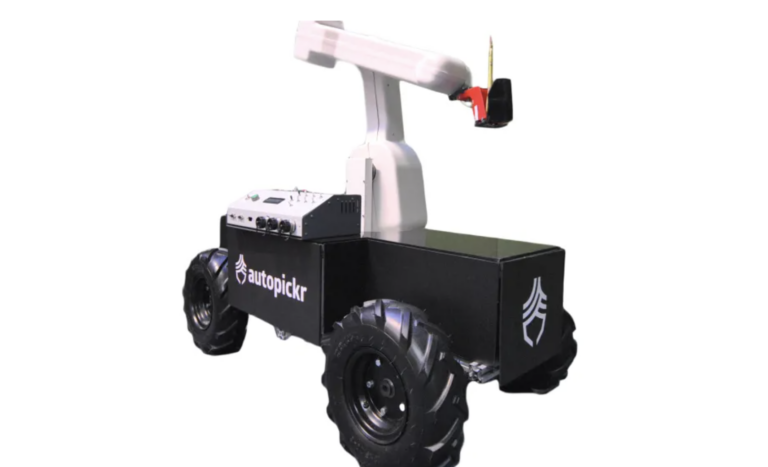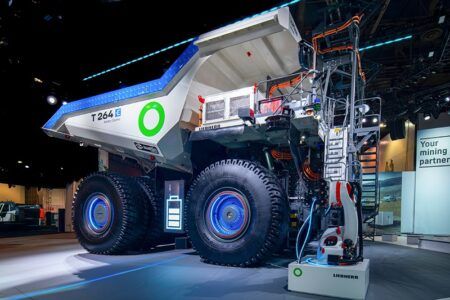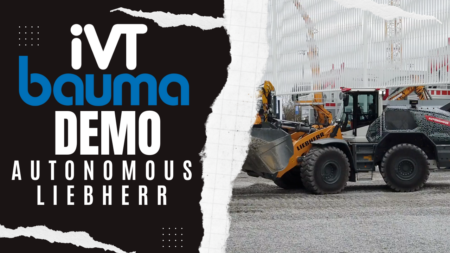Cambridge-based autopickr is developing ‘Gus’, a robotic precision agriculture and harvesting platform that currently specialises in cutting and collecting asparagus spears.
Weighting approximately 45kg, the four-wheeled, battery powered platform can pick 100 per cent of all harvestable asparagus autonomously on an eight-to-10-hour shift.
This differs from its cartesian competitors that can experience lateral drift and occasionally miss or drop the asparagus spears they were meant to harvest.
Several innovations are key Gus’ success so far, including its arm and end effector.
“The way the robotic arm works is…really similar to the human hand, so for handpicked crops it makes way more sense,” said Kyle-James Keen, COO of autopickr, a spin-out from robot arm specialists ST Robotics.
“Most of us worked at ST Robotics for years before and we’ll keep using the arm we have the license for,” said Keen. “It’s not complicated at all, it’s belts and pulleys with motors driving them.”
Keen continued: “When we go on to make our own arm we will stick by that same ethos and same kind of design.”
Keen explained that the arm’s passive end effector cuts and captures the asparagus without gripping it, thereby avoiding damage to the crop. In use, Gus’ onboard containers can hold 20kg of asparagus spears.
“’Gus’ uses robotic motion to cut through and it closes a door around it to be able to make sure it falls in,” said Keen.
To get to the cutting stage, Gus uses ultra-wide band (UWB) to triangulate its position, so it knows where it is and within its world frame, Keen explained, adding that GPS would have been unsuitable as Gus has to work in greenhouses as well as fields.
The platform’s AI-enabled computer vision is made possible with an Intel RealSense camera (for depth and tracking) working with a Nvidia Jeston Orin Nano developed for entry level edge-AI and robotics.
One challenge for Gus is determining whether asparagus is growing in clusters.
“Essentially we detect the spear’s coordinates by using feature detection and…creating a bounding box around that to be able to also detect where clusters are so we can determine [Gus’] optimal path,” said Keen. “The vision system then tells the robot arm the coordinates for the optimal kicking point for the first spear and so on.”
Keen added: “Where we’ve got clusters it also tells us the angle of the where the end effector needs to orientate itself around to be able to cut.”
Company co-founder and CEO Robyn Sands added that a minimum viable product will be ready by the end of 2024, after which Gus will be ready for alpha trials.
Sands added that Gus’ modularity makes it suitable for a range of agricultural and horticultural applications including daffodil harvesting and vineyard management.





